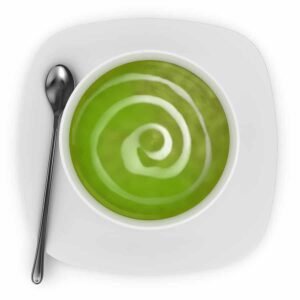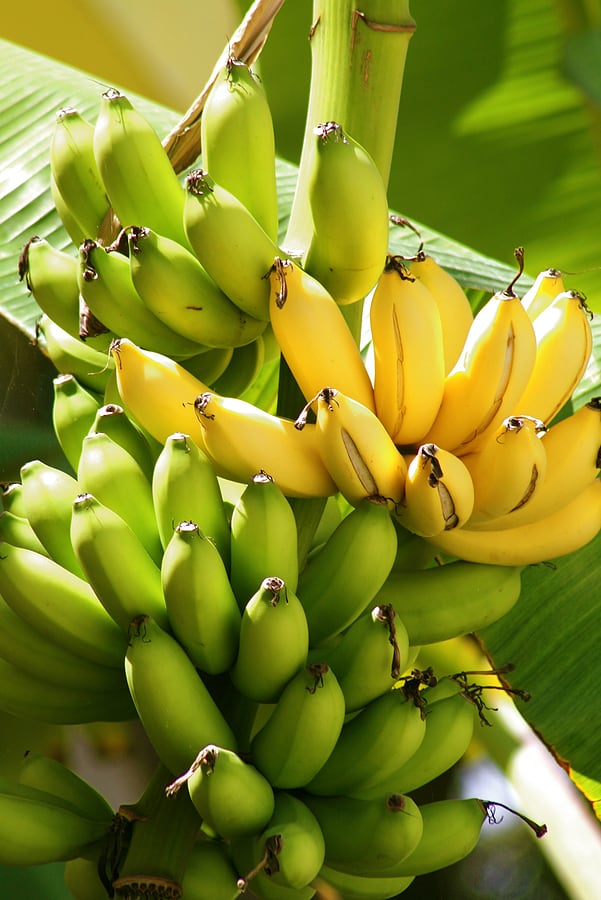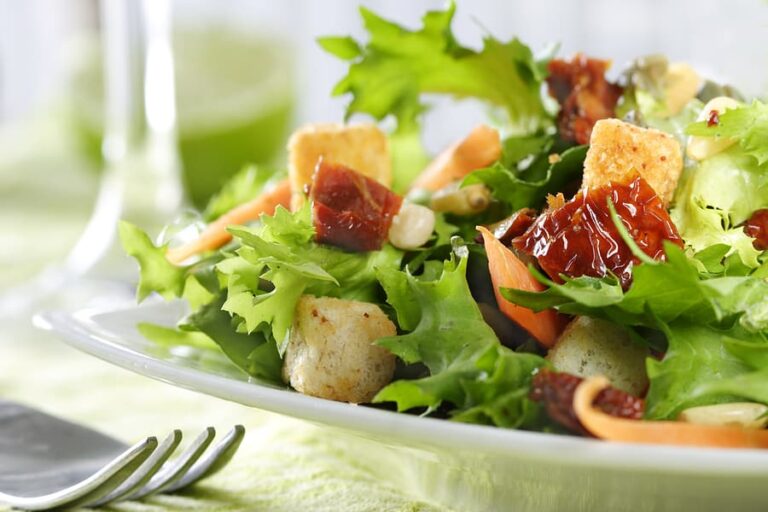How to Make Purée Vegetable Soup with No Recipe

Purée aromatic and sweet vegetables in a blender for a velvety soup or purée them by hand in the pot for a slightly chunky soup. Carrot soup, leek and potato soup, cauliflower soup, broccoli soup, winter squash soup: root vegetables and substantive bodied or flowered vegetables make thick, flavorful purée soups.
Potatoes, carrots, turnips, rutabagas, and also winter squash, broccoli, and cauliflower are flavorful and substantial enough to thicken a soup once puréed, no starch thickener is needed. Corn, peas, fava beans, asparagus, and cabbage puréed also can thicken a soup.
Puréed soft, moist vegetables–mushrooms, green peppers, spinach, zucchini, celery, and onions—will make a light, gentle soup.
Use vegetables fresh from the garden or leftovers from the refrigerator to create tasty puréed soups. You won’t need a recipe once you understand the ratio and method:
How to Make Purée Vegetable Soup Without a Recipe
Ratio and Preparation Notes. The ratio of liquid to solid for a puréed vegetable soup is from 4 to 1 to about 3:1; to make a creamy purée soup, 1 part of the liquid should be cream or milk to thicken and flavor; to make a thick vegetable purée that you might serve as a side dish use a liquid to solid ratio of 2:1. One pound of vegetables equals about 2¼ cups.
Allow 1 to 2 cups finished soup per serving. Seasoning is to taste and a topping or garnish is optional. Allow an hour or longer to prepare and cook.
Step One. Establish the flavor base for the soup by heating a couple of tablespoons of olive oil or melting butter in a heavy bottomed pot (to disperse the heat evenly) on medium-low heat. Add a large leek or a small onion trimmed and split in half and evenly chopped or add a few smashed garlic cloves (or both). Sweat just coated with oil or butter until tender over medium-low heat until fragrant and soft but not brown, 5 to 15 minutes depending upon the amount. Add a tied bouquet of herbs to the pot and cook for 2 to 3 minutes longer: herbs can include 3 or 4 sprigs of thyme, 2 medium bay leaves, 4 or 5 sprigs of flat-leaf parsley—vary the herbs to taste or omit them, but keep it simple so as not to confuse flavor. To this you can (but need not, according to the flavor you seek) add white wine—about a cup or a bit more—and cook on until reduced to just a couple of tablespoons. This step infuses the fat–the butter or oil–with the flavor and aroma of the onion or leeks and herbs; the fat will, in turn, disperse the flavor throughout the soup.
Step Two. Add chicken stock or water (use water for a lighter, vegetarian soup) and raise the heat and bring to a boil stirring occasionally. For faster cooking, heat the stock in advance, as you prepare the flavor base in Step One. Add one or two vegetables trimmed and coarsely chopped or medium diced and bring to a boil then reduce heat to a simmer. (For example, add just cauliflower cut into bite-size florets or add both broccoli and cauliflower. Your vegetable or vegetable combinations can vary each by the season you prepare this soup: just carrots, just winter squash, just corn—a single vegetable, or combinations turnips and rutabagas or leeks and potatoes—many variations.) Simmer—keeping the solids covered with stock or water–until the vegetables are tender and just fall apart when prodded with a fork, about 20 to 30 minutes, the larger the pieces of vegetable the longer the cooking time. Smaller pieces, such as corn, may be ready in 5 minutes. The vegetables must cook through to give their flavor to the stock. For the deepest flavor, sauté vegetables lightly before adding them to the stock; add long cooking vegetables fist, short cooking vegetables near the end.
Step Three. Remove the stock and vegetables from heat. Remove the herbs. Purée the just tender vegetable along with the cooking liquid. Purée in a blender (in small batches), or in the work bowl of a food processor, or with an immersion blender directly in the pot, or for a coarse purée stir vigorously in the pot with a spoon or whisk. (If you use a blender to purée hot soup, be sure the lid is secure and there is an air vent to allow steam to escape.) To make a thick, rich and creamy soup add a cup (more or less) of cream or whole milk or half-and-half or skim milk before blending—as thick or thin as you like. (The richer the liquid, the more satiny the soup.) To make a velvety, even purée pass the mix through a fine strainer after blending. (If you did not use herbs earlier, you can drop a few spring of fresh parsley or other soft herbs into the blender before puréeing.)
Step Four. Return soup to the pot or saucepan and bring to a simmer—a few disperse bubbles, thinning with additional stock or water if the soup seems too thick, and season to taste with salt and fresh ground black pepper if you like.
Serve. Serve the soup hot or cool to room temperature before serving or refrigerate and serve chilled.
A garnish should enliven not complicate, detract, or over power the flavor of the soup. If you garnish, use a dollop or a swirl of cream or lump of clarified butter or olive oil spooned over the soup or a squeeze of lemon. You can also garnish with fresh herbs, thinly sliced vegetables, grated cheese, croutons, or bread crumbs.
Serve as a meal with a salad and crusty bread or crackers or alone as a first course.







